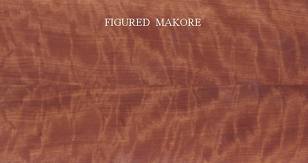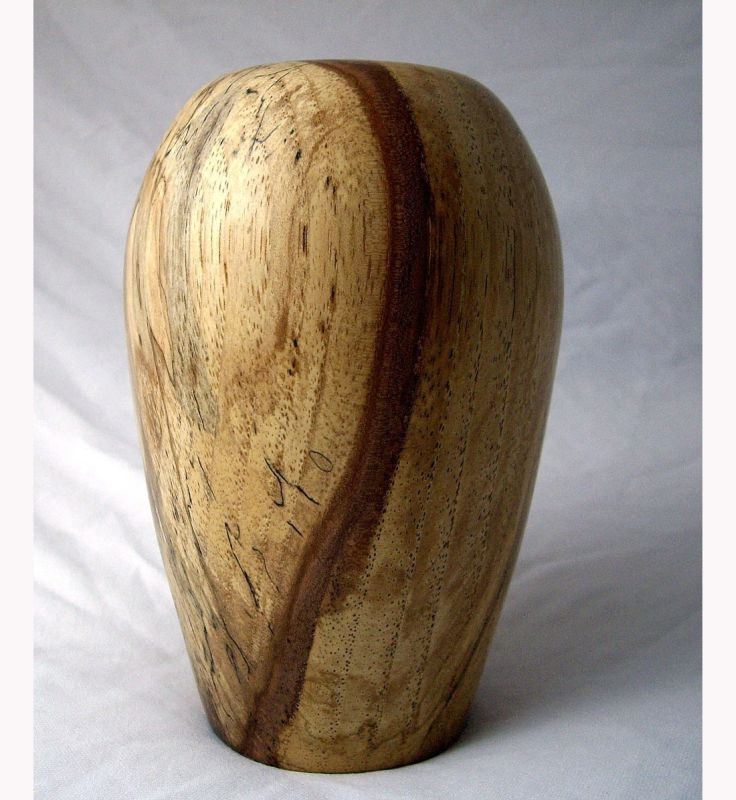Wood Identification Puzzle: Mahogany or What?
After some wild guesswork, we get the answer from the experts at FPL: not Mahogany, but Makore. August 21, 2012
Question
Can anyone tell me what the door sample is on the right in the photos below? The door on the left is quartersawn sapele so Iíve been told. I cannot seem to get a match or able to identify the wood.
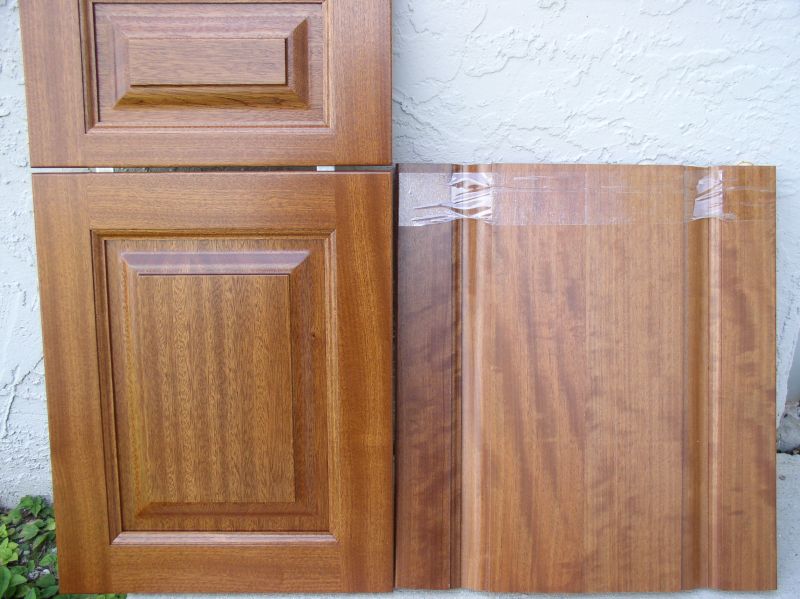
Click here for higher quality, full size image
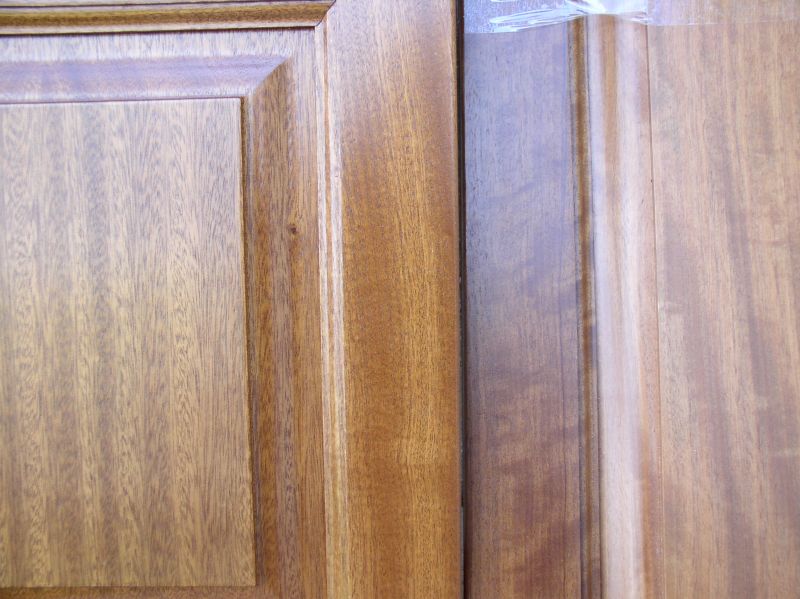
Click here for higher quality, full size image
Forum Responses
(Architectural Woodworking Forum)
From contributor z:
That is Khaya (African mahogany).
From the original questioner:
I think it is close. I also looked at Cuban mahogany and that looks really close.
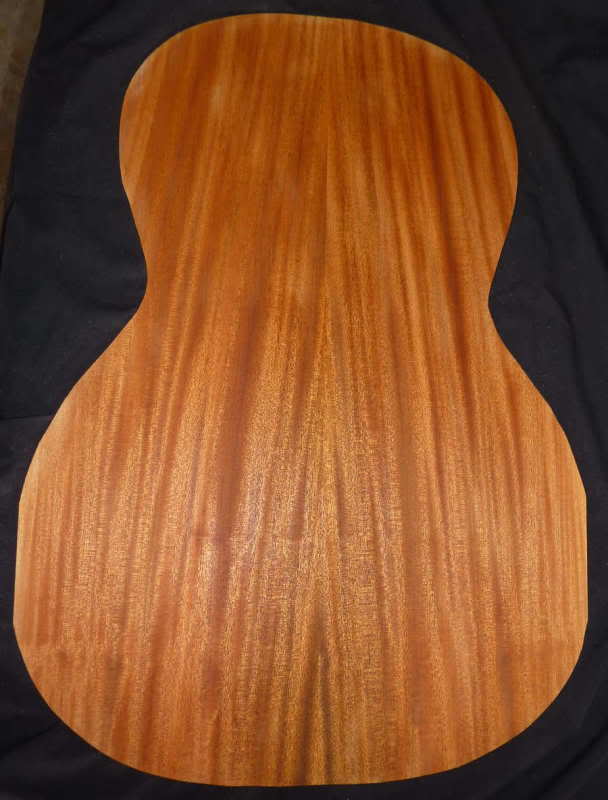
Click here for higher quality, full size image
From contributor D:
I have no trouble accepting the door on the left being sapele. We use a lot of it, and one thing it is not is consistent. Shades, curling, quilting, etc. vary widely from bundle to bundle, although quartersawn looks pretty uniform with the ribbon stripe. Best bet would be to find some that has already been planed, which you can pick through. In my experience, matching that door would be easy. More than likely every rough board I grab would look pretty close to that when planed.
From contributor C:
It looks like walnut. The dreadnaught shape looks like Honduras mahogany.
From the original questioner:
If you look good at the stile there is a lot of blotching. In the raised panel I thought it was odd that the panel only had two boards. Usually there would be at least four pieces. I am really stumped with this one. I stand to lose this kitchen if I cannot get an identical match.
From contributor C:
There are ways you can nail the species down - where were they made?
From the original questioner:
I am pretty sure they were made locally in West Palm Beach, Florida.
From contributor Z:
Why did you find it odd that there were only two boards in the panel?
From the original questioner:
I would think that the fewer pieces of wood in the panel the more chance of cupping and curling.
Here is another photo of the door alone. Hopefully this helps.
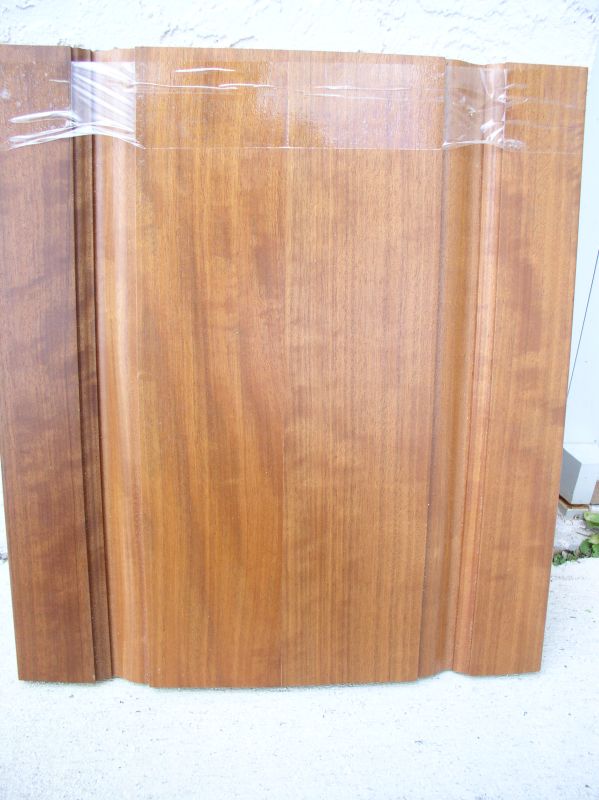
Click here for higher quality, full size image
From contributor O:
It looks like South American mahogany to me. Did you check it against samples of that? The figure grain and color is right there to my eye.
From contributor W:
Cupping is not a problem you should worry about with QS lumber. That is a flat sawn problem, which is worse, the smaller the arc of annual rings, when looking at the endgrain.
From contributor C:
African Mahogany?
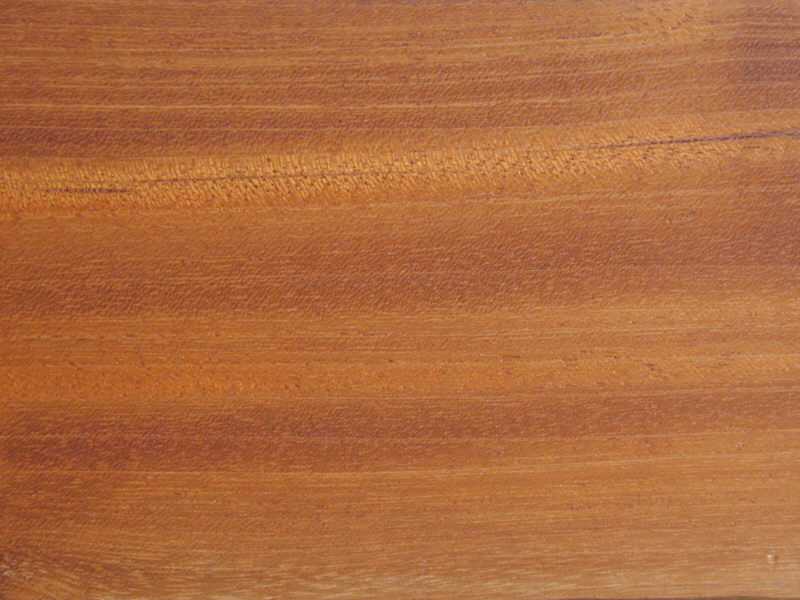
Click here for higher quality, full size image
From the original questioner:
I had a shop tell me that they thought it was quarter sawn figured cherry. I am totally confused now!
From contributor C:
We need to see the end grain. Pecan maybe. Cherry has mineral streaks.
From contributor O:
If the wood has open pores it is not cherry. If it has closed pores it could be. From the pic it looks to have open pores.
From the original questioner:
Another frustrating day with the wood identification - someone indicated it was figured Buginga wood. It looks close but I am not sure. Some of these woods that we are looking at are not finished like the door is. That makes it harder I feel. When I looked at the existing kitchen I noticed that the side refrigerator panel was a regular sheet of 3/4" cherry plywood. That threw me off right from the start. Is there a species of cherry that looks like mahogany but is in fact in the cherry family?
From contributor C:
Buginga?
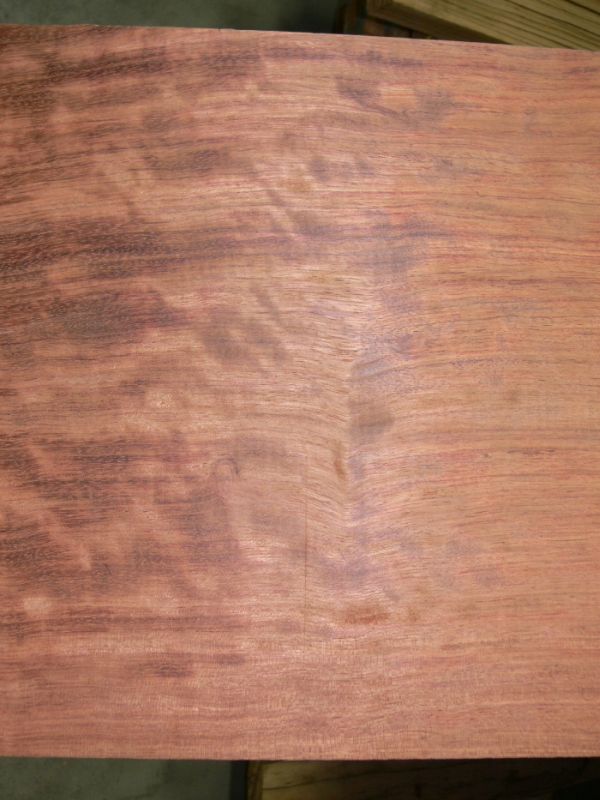
Click here for higher quality, full size image
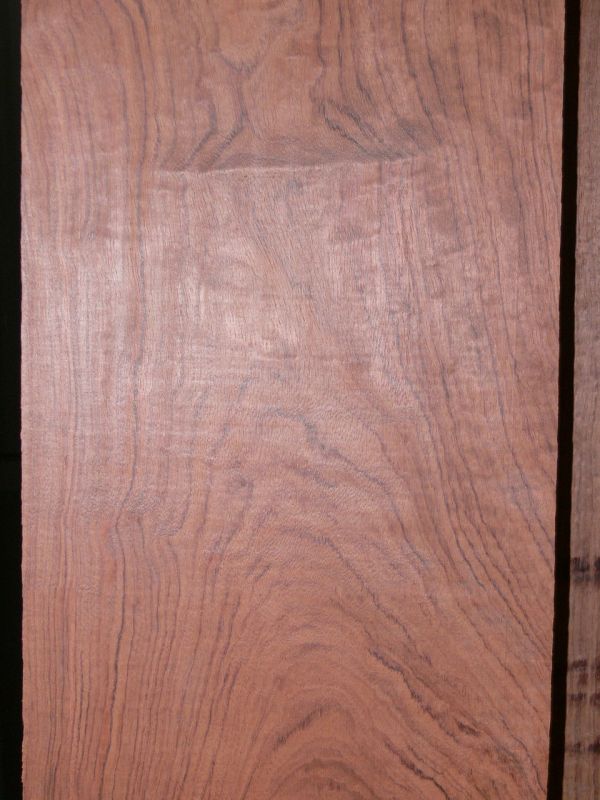
Click here for higher quality, full size image
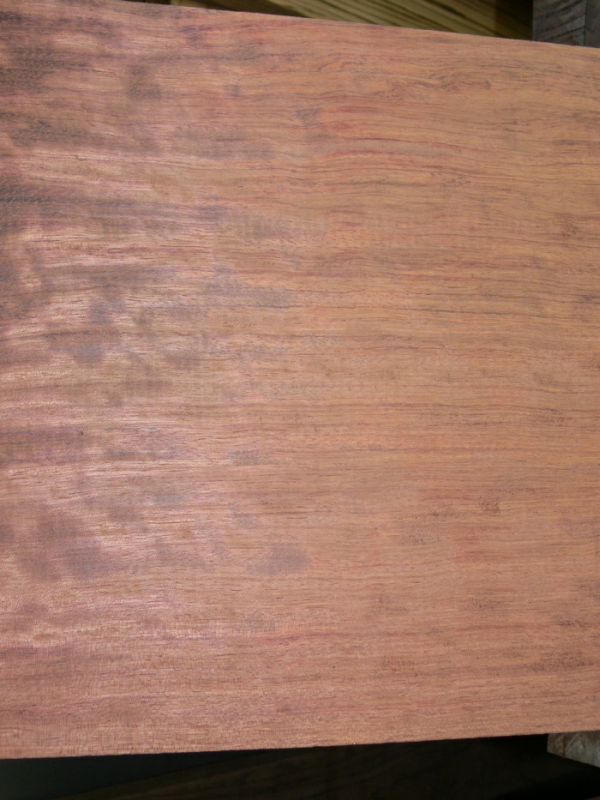
Click here for higher quality, full size image
From contributor S:
There are quarter cut, rift cut, and flat cuts of solids that can affect the appearance greatly, as well as figure - striped, bee's wing, mottled, etc. Context is also important: Does the customer require an exact species match? Or do they just want something that looks similar to the sample? If they merely want a similar look, you have about three choices to use. Make up a sample out of one of them and see if they like it.
From the original questioner:
Here are a couple of end slices to view.
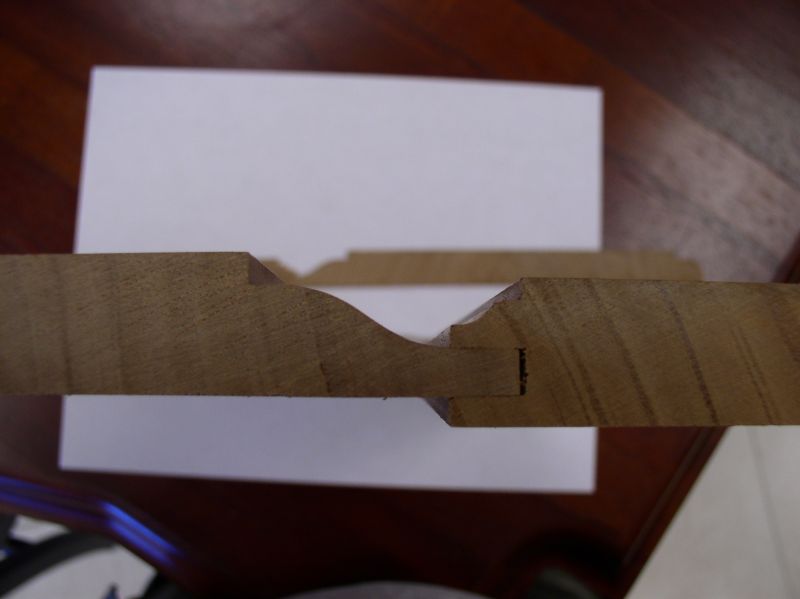
Click here for higher quality, full size image
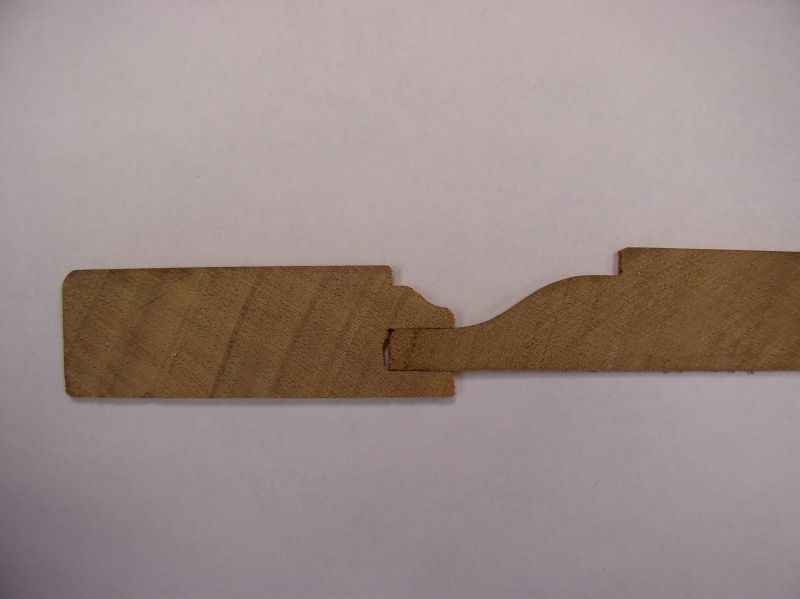
Click here for higher quality, full size image
From the original questioner:
Well, we have an identification right from the FPL. They are saying it is Makor, in the family of SAPOTACEAE. The scientific name is Tieghemella heckelii and Tieghemella africanna. This is not in the Mahogany family as per what I was told today. I found some really great matches on some websites, depending on the cuts they did differ a lot though. The picture below is really close that shows the fleck spots.
